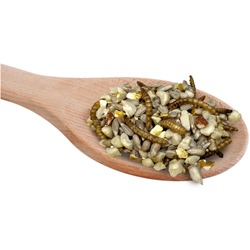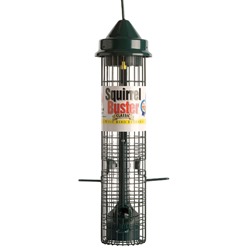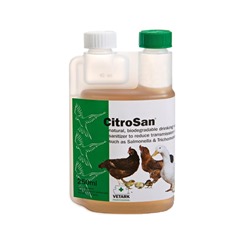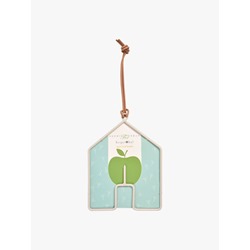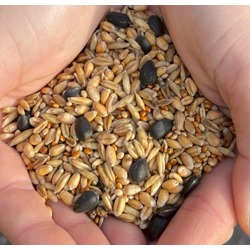
Voted Britain's favourite bird in 2015, taking over 34% of the vote and beating the barn owl (12%) into a distant second place, robins are a familiar sight across Great Britain and Ireland.
The round, red-breasted little birds are most often associated with Christmas, but they're actually present all year round across the islands. Robins can be found in woodland and farmland, and in both urban and suburban settings. Their musical song can be heard day and night (thanks to street lighting)—if you live in the UK, the distinctive sound will almost certainly be familiar to you, even if you never realised it belonged to the robin!
We English speakers even have a unique name for the robin. In other languages, the bird's name is taken from its red breast; for example, the word in French is rouge-gorge, literally 'red throat'. The English name 'robin' may be due to a fond association with Robin Goodfellow (a.k.a. Puck from A Midsummer Night's Dream) or Robin Hood.
Don't be fooled by their cuteness, though—robins are feisty little fluffballs and have been known to fight each other to the death in territorial disputes!
But how to attract these bubbly round birds to your garden?
What do robins eat?
Robins are fond of insects and other invertebrates, including larvae. They particularly love mealworms, including both Dried Mealworms and Live Mealworms.
Robins also eat plenty of nutrient-dense seeds and fruit. Our Deluxe Robin Crumble™ is a delicious and nutritious seed mix that's specially designed for our little red-breasted friends. Dried mealworms and suet pellets have been added for extra protein and fat.
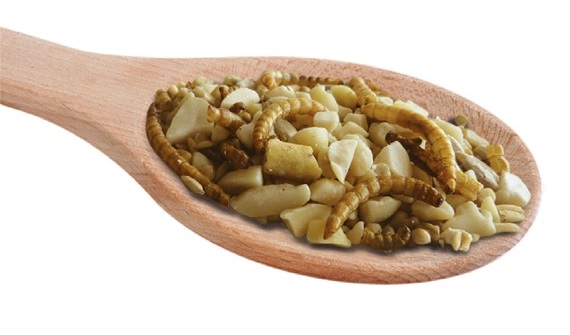
You may also want to consider adding some Robin Peanut Cake to your bird table for extra calories and essential fatty acids, especially during the cold winter months.
Best bird feeders for robins
So now that we know what robins eat, the next question is how to deliver it to them.
Robins are ground feeders, and while many garden birds are happy to eat from hanging feeders, robins are far less likely to do so.
Feeders with a flat surface are your best bet to encourage some cheerful robins to visit your garden. These come in a couple of different forms:
1) Ground feeders for robins
Ground feeding trays are the obvious first choice for a ground feeding bird.
A Square Ground Feeder Tray that allows for drainage is ideal, as this will keep dry food fresh even when it rains. Perfect for seed mixes like the aforementioned Deluxe Robin Crumble™!

We also offer Ground Feeding Trays that are suitable for both dry and live foods, including those all-important mealworms of which robins are so fond.
Don't forget to use a Ground Feeder Guardian to keep away larger birds who may frighten off the little robins!
2) Feeder trays for robins
If you'd like a chance to take a closer look at your robins, the I Love Robins Window Feeder attaches directly to your window! The feeder's canopy provides protection from the elements for both the seeds and the birds they attract. Its design is also ideal for deterring larger birds like pigeons.

Similarly, the I Love Robins Pearl Feeder is a nifty tray feeder with a dome to protect feeding robins. (This one doesn't attach to the window, though.)
We also have a fun I Love Robins Ceramic Dish to brighten up your garden!
Make your garden a welcoming environment
Finally, whichever feeder you end up using to attract robins to your garden, you want your little visitors to feel that it's safe for them to keep coming back. If possible, keep your robin feeders at least 2m away from dense vegetation to reduce the risk ambush by cats and other predators. The safer robins (and other small birds) feel in your garden, the more likely they are to visit you time and time again.
Check out our full range of ground feeders and feeder trays, and don't forget to add some Deluxe Robin Crumble™ to your basket for FREE delivery on your whole order!
Browse Bird Feeders Buy Robin Food
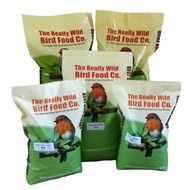
 Back
Back Bird Feeders
Bird Feeders  Seed Feeders
Seed Feeders Peanut Feeders
Peanut Feeders Peanut Butter Feeders
Peanut Butter Feeders Suet & Fat Feeders
Suet & Fat Feeders Window Feeders
Window Feeders Hanging Feeders
Hanging Feeders Feeding Stations
Feeding Stations Ground Feeders
Ground Feeders Easy Clean Feeders
Easy Clean Feeders Bird Tables
Bird Tables Seed Trays
Seed Trays Bird Baths & Drinkers
Bird Baths & Drinkers Feeder Accessories
Feeder Accessories Feeder Hygiene
Feeder Hygiene Squirrel Proof Bird Feeders
Squirrel Proof Bird Feeders For the Kids
For the Kids Niger Seed Feeders
Niger Seed Feeders Mealworm Feeders
Mealworm Feeders Bird Food Storage
Bird Food Storage Fat Ball Feeders
Fat Ball Feeders Tube Feeders
Tube Feeders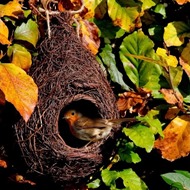



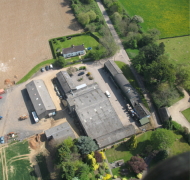 Our Farm
Our Farm Contact Us















